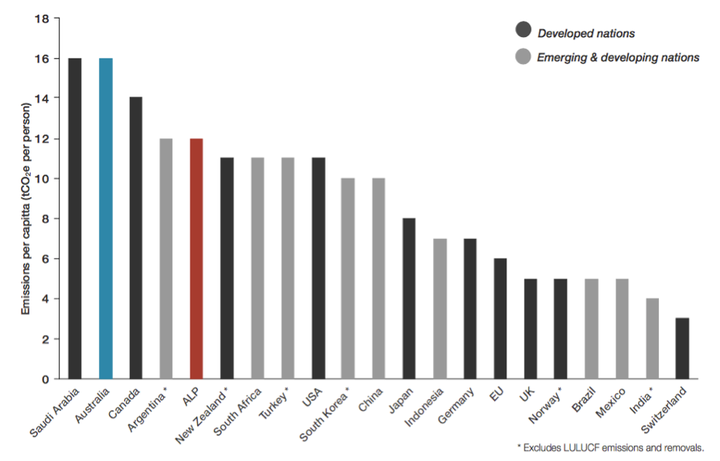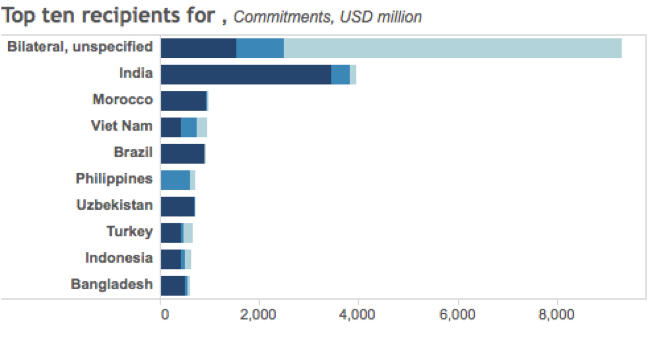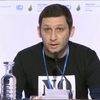Arif Cem Gündoğan is a doctoral candidate in Earth System Science in Middle East Technical University (Turkey).
Ethemcan Turhan is a postdoctoral researcher in Istanbul Policy Center (Turkey) and KTH Environmental Humanities Lab (Sweden).
COP22 started with a surprising request by Turkey: addition of a sub-item to the provisional agenda for COP 22 which would enable the country’s access to climate finance under the Green Climate Fund and technology transfer under the Climate Technology Centre & Network with a dubious claim of enhancing Turkey’s mitigation ambition. This request caused almost an hour of delay in the adoption of the agenda and number of parties urged the COP president to continue with “more urgent matters” and underlined that extension of the agenda and a COP decision are not the best way forward. Strikingly, during the moments Turkey raises its concerns over access to climate finance to raise its level of ambition, the Turkish energy minister was live on TV at a mass opening ceremony, announcing ambitious domestic energy policy that will boost fossil fuel based generation. Obviously due this paradoxical context, Turkey got the first place at the Fossil of the Day award ceremony.
As COP22 unfolds this week in Marrakesh, parties to UNFCCC are entering a new cycle of negotiations not only for a roadmap on turning post-2020 Paris pledges into concrete actions but also for levelling up the climate finance and agreeing on procedural intricacies. Turkey, a country whose climate change policies has for long been defined by a politics of ‘special circumstances’ is likely to be an emergent actor in the Blue Zone particularly when it comes to topics like differentiation and access to climate finance. Given the botched coup attempt of 15th July and the consequent state of emergency declared in the country, one might correctly think that climate policies are not the main priority. Nonetheless a deeper look into the all-but-stable geopolitics in the region, recently passed governmental decrees providing legal backdoors to extractivism in the country and coal rush with hefty incentives to domestic lignite make the case a significant one. In what follows, we look at some of these key issues and their potential impacts on Turkey’s positioning under the new institutional architecture of the climate regime.
Turkey’s INDC envisages up to 21% reduction in GHG emissions from the business as usual (BAU) level by 2030 with an implementation period that starts with 2021. Several studies conclude that this target is nowhere near being fair and adequate considering Turkey’s share in total global GHG emissions which account for 1.24% and per capita emissions destined to outpace many giant economies such as the EU, USA and China (Figure 1).

Figure 1. Per capita emissions in 2030 resulting from countries’ initial targets (The Climate Institute, 2015)
Turkey aims to utilize carbon markets to achieve this target, which may risk exporting some of its emissions to other developing countries. Instead, the country could easily adopt carbon-pricing measures that would reduce its projected emission by 40% with respect to the baseline scenario that lies at the heart of its INDC. It should also be noted that Turkey did not pledge any pre-2020 action. This is confusing as the country strives for hosting the climate summit in 2020 (COP26) and does not show any ambition to undertake rapid climate action and foresee a peak of its emissions by 2030 in line with the best available climate science. Moreover lack of attention to adaptation in Turkey’s INDC despite its location at the eastern end of highly vulnerable Mediterranean has also been criticised. A recent study by Murat Türkeş et al. already found that the “semi-arid and dry sub-humid continental central Anatolia climate characteristics expanded substantially” in the past 30 years thereby providing a significant precedent for future droughts.
One the key arguments the Turkish negotiators often use is that the country needs climate finance from developed countries in order to raise its ambition level. The question is whether Turkey is already receiving substantial climate finance in order to realize its fair share or not? Well, yes and no. In the last decade (particularly after the country made big steps towards energy sector privatisation), Turkey has become an attractive market for multilateral development banks, including EBRD (European Bank for Reconstruction and Development) that has invested over €8 billion in the country through over 200 projects. Roughly half of these projects fall under renewable energy and energy efficiency themes. Though most of these investments are provided to private sector in the form of concessional loans, equity investments or credit lines through intermediary finance institutions, the country’s renewable energy and energy efficiency targets will depend on the continuity of such funding flows. In 2015, among more than 30 recipient countries, Turkey got the lions’ share (almost 20%) of total EBRD investments and reconfirmed its position as the top destination for the bank’s investments. In addition to EBRD, the Government of Turkey has also been working closely with other multilateral development banks such as the IBRD and the IFC in order to tap other sources of climate financing including the Clean Technology Fund. Turkey was able to tap US$250 million to scale up its mitigation measures through renewable energy efficiency project deployments. Turkey also taps other forms of climate-related finance sources. According to the OECD Climate-related development finance in 2014 from OECD DAC statistics, Turkey is among top destinations for bilateral & multilateral finance, receiving as much financing as developing nations that already feel devastating impacts of climate change such as Indonesia and Bangladesh; and thereabouts as Uzbekistan, Philippines, Brazil, Vietnam, and Morocco (see Figure 2). Turkey also enjoys financing from bilateral or multilateral donors including Germany, Japan, European Union, France and Asian Development Bank (see Figure 3).

Figure 2. Top 10 climate related development finance recipient countries in 2014 (OECD DAC Database)

Figure 3. Total commitments by climate objective from recipient’s perspective (OECD DAC Database)
Another question that comes to mind is that whether Turkey uses its public incentives in line with the overall aim of the Paris Agreement: rapid transition to a low-carbon economy? According to a study of IISD, quantifiable subsidies to coal in 2013 make up almost 0.1% of Turkey’s nominal GDP. This was much before the recent amendment in energy package through which coal plants can enjoy lucrative incentives and exemptions from environmental regulations. Furthermore, a governmental decree issued at the height of post-coup attempt (in its famous Article 80) provide exemptions from licences, permissions and appropriations to projects deemed as ‘strategic investments’, a vague concept which can easily be steered in any direction. In addition to these incentives which lock-in the country a carbon-intensive future, we should also mention that climate-related development financing Turkey gets through financial intermediaries can also be utilized for fossil fuel project financing. For instance, in 2011, a “highly-efficient” natural gas fired thermal power plant has been financed through Private Climate Finance Support scheme. Potential public coal funding through financial intermediaries in Turkey between 2007 – 2014 could be major portion of up to US$8.6 billion. In fact, a recent analysis by Sevil Acar and Erinç Yeldan underlines that by removing the coal subsidization scheme, Turkey can mitigate its greenhouse gases by as much as 5% without harming its economy. But it seems these findings do not resonate for the current government as they intend to full utilization of domestic fossil fuel resources (mainly coal with low calorific value) of the country by 2023.
Whether Turkey will embrace the low carbon development opportunities after Paris or it would refrain from ratifying the Paris Agreement as much as possible thus repeating a historical mistake is yet to be know. However, there is one thing that seems certain for the country during and beyond COP22: a fair, balanced and equitable contribution to global efforts will require much progressive political will and a stronger commitment to international law.
